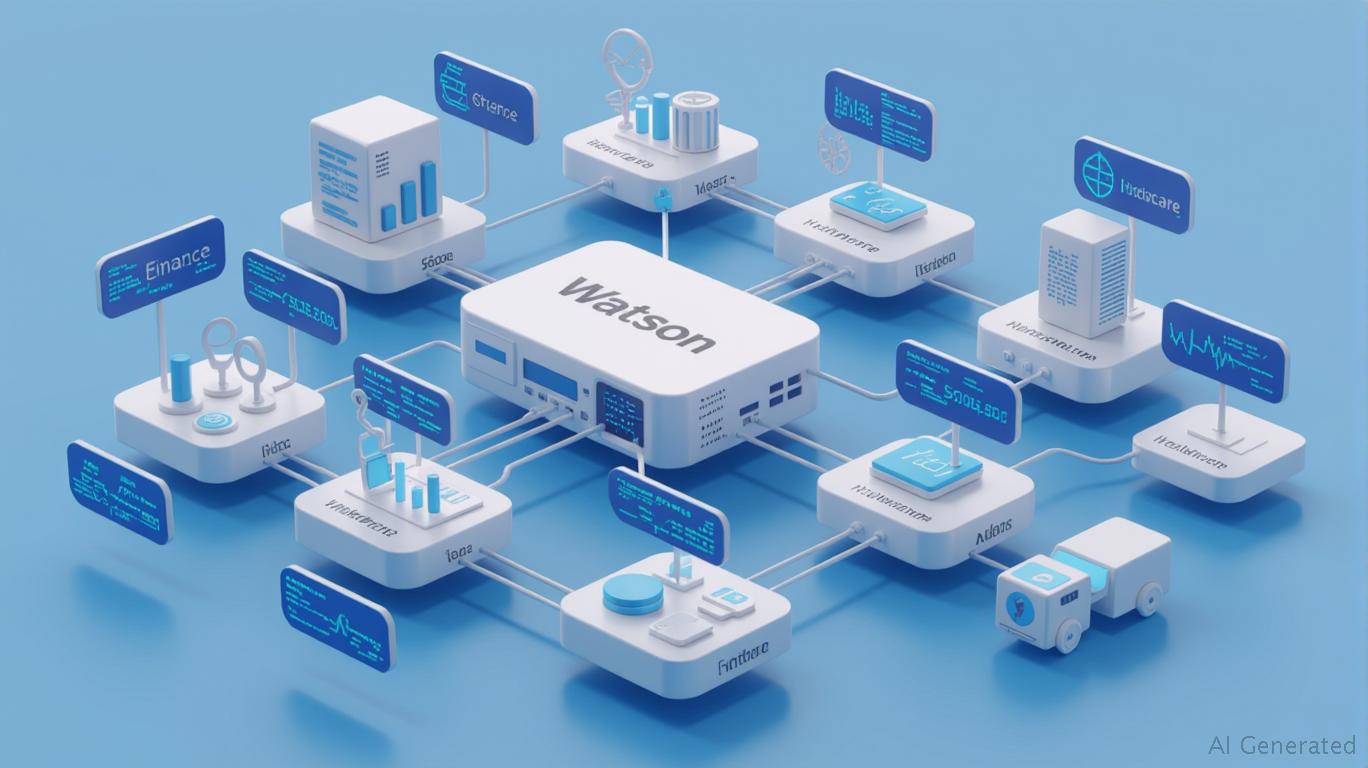IBM vs NVIDIA Why AI Investors Need Both for Diversification
IBM's enterprise AI solutions and NVIDIA's hardware dominance highlight why diversification in AI investments requires exposure to both companies.
By Theodore Quinn
Saturday, Jul 5, 2025 1:07 pm ET
![]() 25min read
25min read
The AI Revolution Demands Diversification
The AI revolution is no longer a distant promise—it's reshaping industries today. While NVIDIA (NVDA) dominates headlines with its GPU-driven infrastructure, IBM (IBM) is quietly emerging as a complementary force in enterprise AI solutions. Investors focusing solely on hardware giants risk missing IBM's underappreciated growth trajectory.
IBM: The Enterprise AI Specialist
IBM's WatsonX platform is solving the last-mile problem of AI adoption by integrating advanced tools into legacy enterprise systems. With over $5 billion in WatsonX contracts by late 2024 and a projected $6 billion in annual AI revenue, IBM is gaining traction. Its hybrid cloud expertise, built on Red Hat OpenShift, caters to regulated industries like healthcare and finance, where compliance is critical.

Recent acquisitions like HashiCorp ($6.4 billion) and DataStax strengthen IBM's infrastructure modernization efforts, positioning it to compete with cloud hyperscalers like Microsoft (MSFT) and Amazon (AMZN). Additionally, IBM's quantum computing roadmap (targeting fault-tolerant systems by 2030) adds a long-term growth catalyst.
NVIDIA: The AI Infrastructure Titan
NVIDIA's Q1 2026 revenue hit $44.1 billion, with its data center segment surging 73% year-over-year to $39.1 billion. Its Blackwell NVL72 supercomputers and CUDA ecosystem cement its dominance in AI hardware. However, risks loom—U.S. export restrictions on H20 GPUs to China have already cost $4.5 billion in inventory charges, and geopolitical tensions could further disrupt supply chains.
Why Diversification Requires Both
IBM and NVIDIA are complementary:
- IBM's Strengths: Security, compliance, hybrid cloud integration, and modular AI solutions (e.g., WatsonX Orchestrate).
- NVIDIA's Strengths: Unmatched compute infrastructure for training large models and a robust CUDA developer ecosystem.
Together, they form a full-stack AI portfolio: IBM handles enterprise integration, while NVIDIA provides raw computing power.
Investment Outlook
IBM's stock has surged 28% year-to-date in 2025 but remains undervalued (forward P/E of 24 vs. NVIDIA's 45). NVIDIA, while dominant, faces geopolitical risks and a potentially saturated GPU market.
Recommendation:
- IBM: Buy for long-term exposure to regulated AI markets.
- NVIDIA: Hold for high-risk, high-reward exposure but consider trimming if geopolitical risks escalate.
Disclosure: This analysis is for informational purposes only. Consult a financial advisor before making investment decisions.
Related News
AWS extends Bedrock AgentCore Gateway to unify MCP servers for AI agents
AWS announces expanded Amazon Bedrock AgentCore Gateway support for MCP servers, enabling centralized management of AI agent tools across organizations.
CEOs Must Prioritize AI Investment Amid Rapid Change
Forward-thinking CEOs are focusing on AI investment, agile operations, and strategic growth to navigate disruption and lead competitively.
About the Author

Alex Thompson
AI Technology Editor
Senior technology editor specializing in AI and machine learning content creation for 8 years. Former technical editor at AI Magazine, now provides technical documentation and content strategy services for multiple AI companies. Excels at transforming complex AI technical concepts into accessible content.